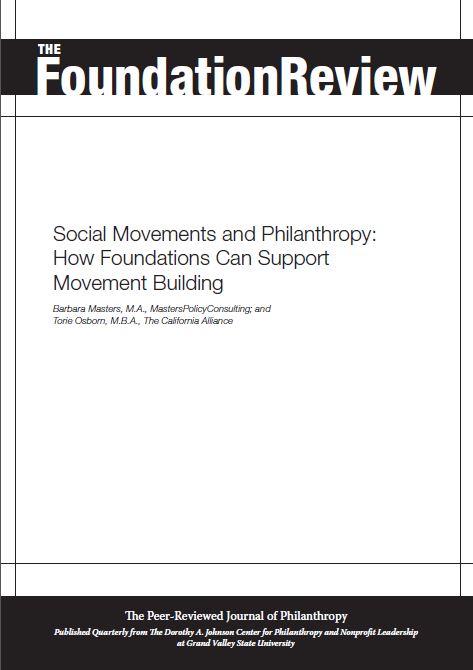
Social Movements and Philanthropy: How Foundations Can Support Movement Building
On page 17 of this report, social service organizations are identified as places that have not been organized to contribute to social change efforts. The author cites the Building Movement Projects Social Service and Social Change: A Process Guide (http://www.buildingmovement.org/blog/entry/22?news/entry/22) as a tool to increase engagement as well as noting other strategies for recruitment.
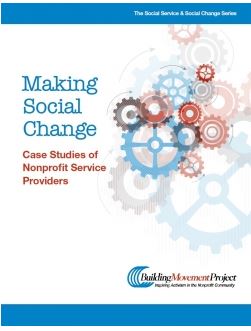
Making Social Change: Case Studies of Nonprofit Service Providers
Building Movement Project developed this set of case studies as a response to numerous requests from groups looking for real-life examples of the often-challenging process of incorporating social change models into social service work. These case studies, geared toward practitioners, board members, and funders interested in this work, are designed to complement one of our other landmark Building Movement publications: Social Service and Social Change: A Process Guide (2006). The five case studies in this publication offer examples of organizations that are integrating social change activities into their work.
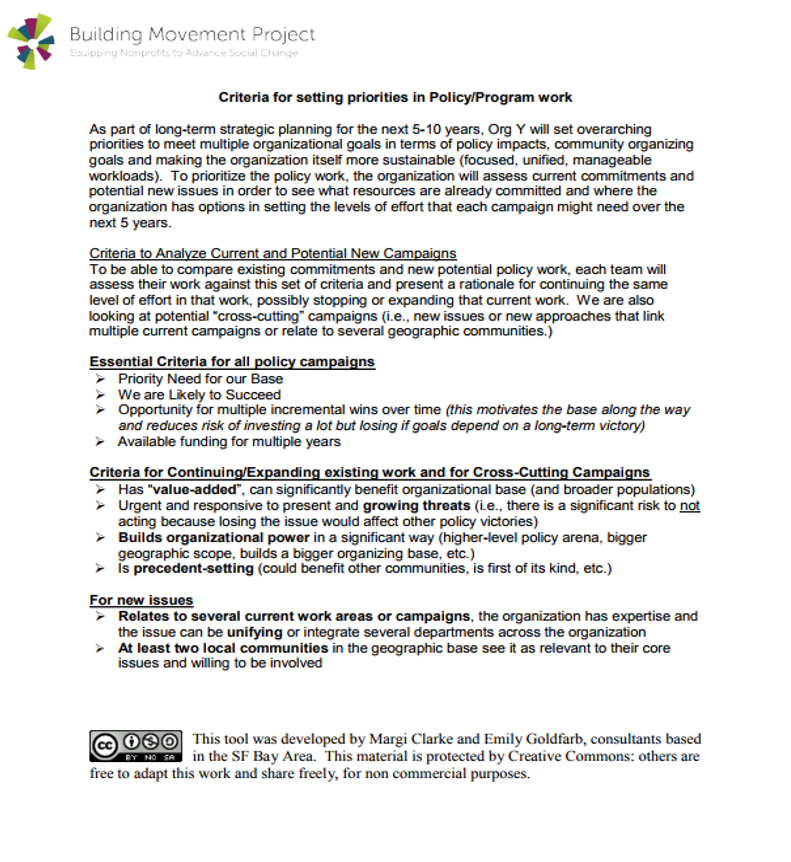
Criteria for Setting Priorities for Policy/Program Work
Based on an actual document developed by a service agency, this is an example of a set of criteria that an agency might use to assess which policy campaigns are a match for the agency.
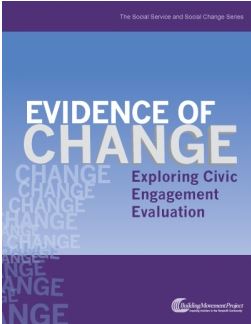
Evidence of Change: Exploring Civic Engagement Evaluation
Building Movement, the Alliance and the Ms.Foundation were all part of the W.K. Kellogg Foundation’s Civic Engagement Learning Year
in 2008. As part of the project, groups who formed partnerships were eligible for small Connect Grants. The three groups received a grant to hold a summit with practitioners, researchers, intermediaries and funders to look at civic engagement impact measurement and dialogue with other organizations.
This report presents a brief summary of the key findings that came out of the Civic Engagement Evaluation Summit. It also examines how organizations currently view their relationship with impact measurement. It then ends with a set of recommendations for how to increase the nonprofit sectors capacity to respond to the increasing need for tools to measure the impact of civic engagement and social change work.
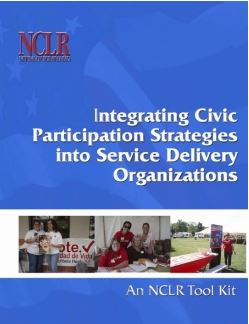
Integrating Civic Participation Strategies into Service Delivery
This toolkit was designed to support the NCLR Latino Empowerment and Advocacy Project (LEAP) to measurably increase Latino electoral participation, but it can be applied to any social service/social change group seeking to increase civic participation as part of their organizations work. Included are a variety of tools including surveys, intake forms, flyers, workshop guides, and petitions to assist in the integration process.
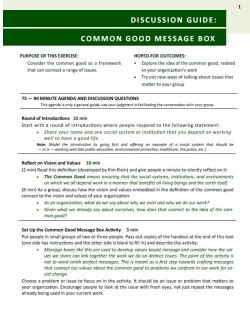
Common Good Message Box
This agenda and worksheet can be used to create a common good message for a community issue or concern. This tool can be a useful first step towards crafting new messages about the problems we confront in our work for social change. Use it to develop values-based messages, and reframe the issues that matter to your group.
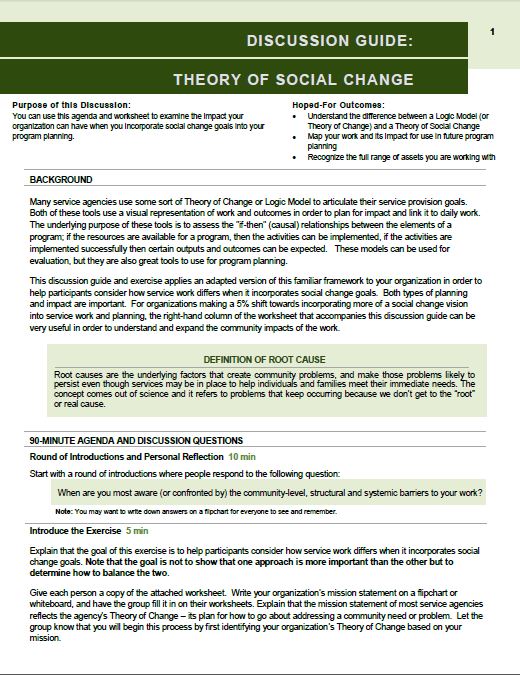
Theory of Social Change
This discussion guide and exercise applies an adapted version of this familiar framework to your organization in order to help participants consider how service work differs when it incorporates social change goals. Both types of planning and impact are important.
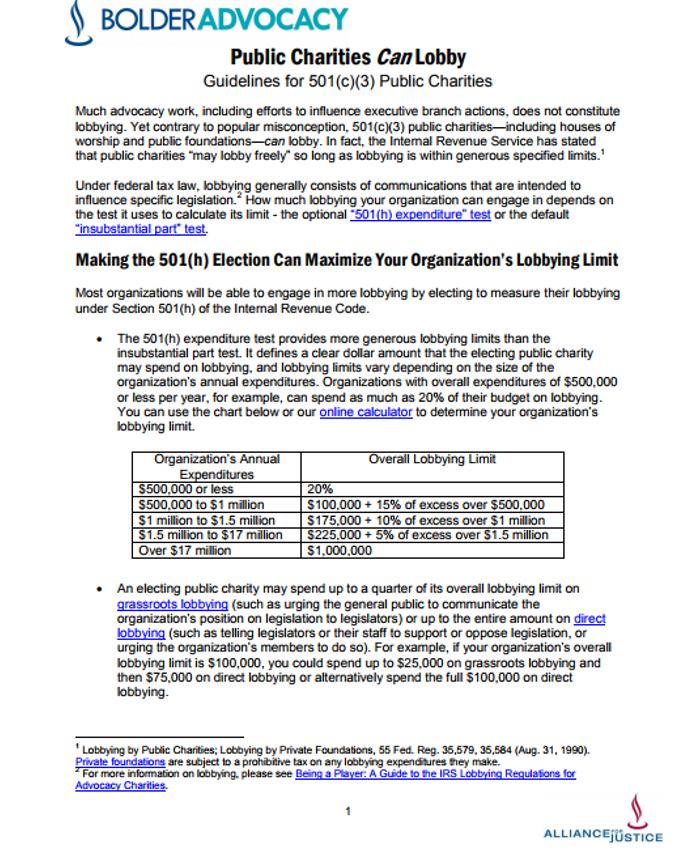
Nonprofits and Lobbying
This document provides the lobbying rules for nonprofit, 501(c) (3) organizations.
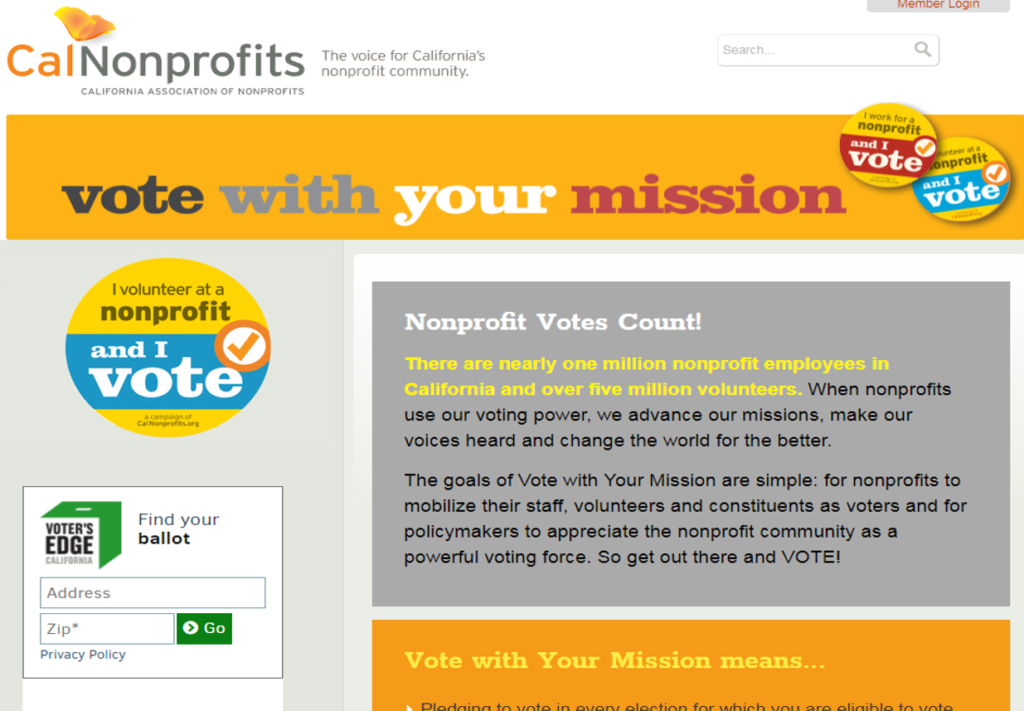
Vote with your Mission Campaign Kit
These materials, provided by California Nonprofits, help organizations promote civic engagement and leadership.
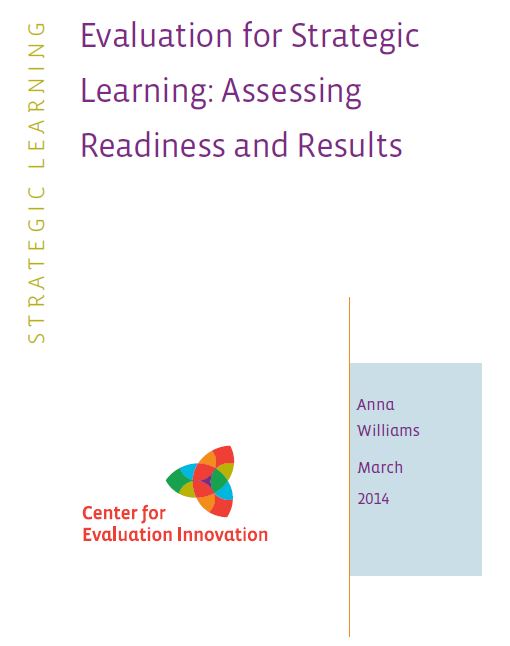
Evaluation for Strategic Learning
This paper makes the case for the value of using evaluation to inform strategic learning. Organizations that are set up for learning will make the best use of this type of evaluation approach.
